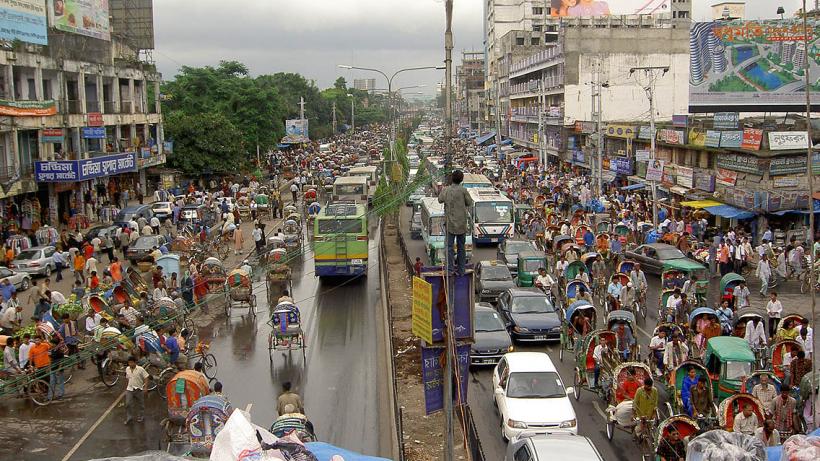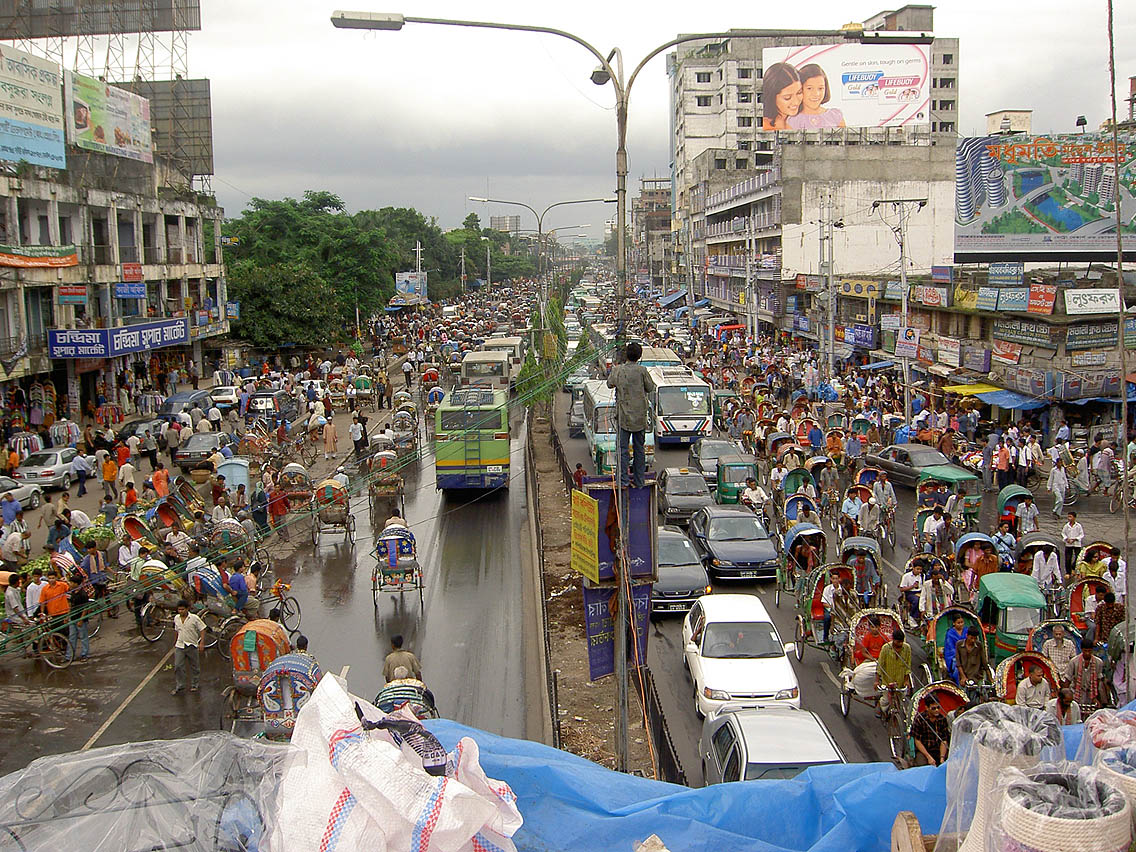
Making cities work for development: Perspectives from South Asia
Cities can be productive and liveable places but poor public services, weak infrastructure, and institutional and legal obstacles to private investment have in many cases undermined prosperity.
More than half the world's population live in towns and cities. The urban population of South Asia grew by an estimated 130 million from 2000 to 2011, and is projected to grow by another 250 million by 2030.
Effective and liveable cities are intrinsic to the economic growth and prosperity of countries. The economic advantage of cities derives from benefits to scale and agglomeration that emerge in dense clusters of people and businesses. However, South Asia has still not fully reaped the benefits of urbanisation. Gaps in urban infrastructure and public service delivery have constrained the potential for South Asia to join the ranks of more developed countries. Improving urban environments will require greater public and private sector investments and a high level of policy engagement.
For cities that fail to generate sufficient investment, the consequences are plainly visible. In South Asia, 130 million urban residents live in slums without access to basic infrastructure and public services. Getting urbanisation right requires smart, joined-up policy across urban agendas. Effective planning should address barriers to efficient markets and public finance that can manage congestion and fill gaps in housing, transport, and infrastructure to make cities liveable.

Urban skyline in Dhaka, Bangladesh. Source: Ali Wassi
Cities can be both productive and liveable places
The fundamental advantage of cities comes from scale and density. Studies show that higher density increases prosperity; doubling a city's size increases average productivity by 5–7 percent. Cities also incubate innovation and entrepreneurship. Enterprise clusters not only raise the productivity of existing activities (through competition), but also allow new activities to take root.
Cities thrive on agglomeration economies to drive higher productivity. High population density ensures that firms can readily access large pools of buyers and suppliers. Well-managed density cultivates a mutually beneficial virtuous cycle between agents. In Bangladesh, to date, economic growth is closely correlated with urbanisation - urban dwellers constitute about 28 percent of the total population of the country, but their contribution to GDP is more than 45 percent (Bangladesh 7th Five year Plan). Thus sustainable urbanisation is a potential driver of economic growth.
Clusters of specialisation are increasingly emerging in developing countries. Bangalore is now recognised as a technology hub, Dhaka as a hub for garment manufacturing, and Sialkot for football manufacturing. Market integration relies on high population density in small geographic areas to accelerate the frequency of economic transactions.
Cities thrive on agglomeration economies to drive higher productivity.
Effective cities can power growth
Despite the ability of cities to power economic growth, the considerable downsides of density cannot be ignored. Challenges to infrastructure, housing, transport, and basic service provision continue to undermine the productivity of cities like Dhaka.
To fully realise the potential of cities, South Asia must address critical gaps in urban infrastructure and basic services. An equally important policy objective will be for governments to improve the efficiency of urban markets. Better regulation can prevent market failures to reduce socially damaging outcomes.

Traffic congestion in Dhaka, Bangaldesh. Source: Arttu Manninen
Urban development activities in Bangladesh are dominated by national sectoral agencies and the absence of proper institutional and legal frameworks to guide and control physical development in urban areas. Urban development in most cases has been haphazard. The involvement of multiple organisations in the urban development process results in uncoordinated and overlapping activities.
Infrastructure and public services
South Asian cities continue to be characterised by high levels of poverty and inadequate or overly expensive housing stock. Insufficient housing supplies reduce the liveability of cities and further depreciates environmental and health outcomes. Over-congestion makes it harder to keep up with infrastructure demands for water and sanitation. Waste generation in Dhaka is estimated to be 3,000 to 4,000 tonnes a day, almost 60 percent of which is uncollected. Despite being a megacity of 14 million residents, Dhaka does not have Mass Rapid Transit (MRT), in any form, to move large numbers of people at high frequency.
The number of urban dwellers in South Asia living below the national poverty line ranges from 13-25 percent. Public investments can support poverty reduction. Transport investments help connect ideas, people and goods, making them particularly high-impact. It follows from this that infrastructure investments should lead, not lag, development.
Infrastructure represents an enormous public finance burden. Successful cities leverage the economic prosperity of their city as a local tax base. In line with this, targeting urban land values offers an ethical and efficient mechanism for raising tax revenues for city authorities.
Land markets and residential investments
Bangladesh, like many of its neighbours, faces an acute shortage of affordable housing. Over a third of Bangladeshis are expected to be living in cities by the end of this year, a number growing at an average of 4 percent, annually. Meanwhile the housing deficit in urban areas grew from 1.13 million units in 2001 to 4.6 million units in 2010 (Bangladesh Bureau of Statistics). The deficit is projected to reach 8.5 million units in 2021 if investment in the housing sector does not keep pace with projected population growth.
Insufficient housing supplies reduce the liveability of cities and further depreciates environmental and health outcomes.
Housing affordability is further eroded by poor land administration policies which make urban housing prohibitive for low-income groups. The quality of existing housing stock is also very poor; squalid conditions and low-levels of residential investment are pervasive because there is a lack of clarity and security in land rights across South Asia. These factors deter investment and encourage low quality, insecure housing structures, accommodating lower population densities (low-rises).
Achieving appropriate levels of residential investment also require markets to function effectively. Capital markets and financial intermediation are needed to provide ways of saving, borrowing and lending for both commercial and residential construction. Informality and limited financial information reduce the functionality of capital markets. Policy must be joined-up across financial regulation, macroeconomic policy, and urban planning and management.
Business investment and jobs
A city's success depends, ultimately, on its ability to create jobs. This requires a good business environment. Costly cities – those that fail to economise land use, build affordable housing, infrastructure, and public services – will attract fewer new jobs.
Without good infrastructure and services, cities become trapped in low-value economic activities. A city built around low value activities is ill-suited to the requirements of modern manufacturing and service sectors. Low productivity filters into incomes and tax revenues making it difficult to finance the investments required for greater productivity.
Way forward
The implication for South Asia is that policymakers must act soon to realise the full potential of urban growth in the region. Regardless of policy, urbanisation will continue. Making it all the more important that it is done right to harness the advantages of cities to generate growth. Government coordination is paramount to prevent the negative externalities of uncontrolled congestion.
Costly cities – those that fail to economise land use, build affordable housing, infrastructure, and public services – will attract fewer new jobs
Improving avenues for financing will be important to attract public and private investments. Legal and regulatory structures similarly work to improve the way markets function and to improve the clarity and security of land rights. Overcoming these barriers will be essential for paving the way forward for South Asia's urban development.
This post was originally published on the Daily Star

